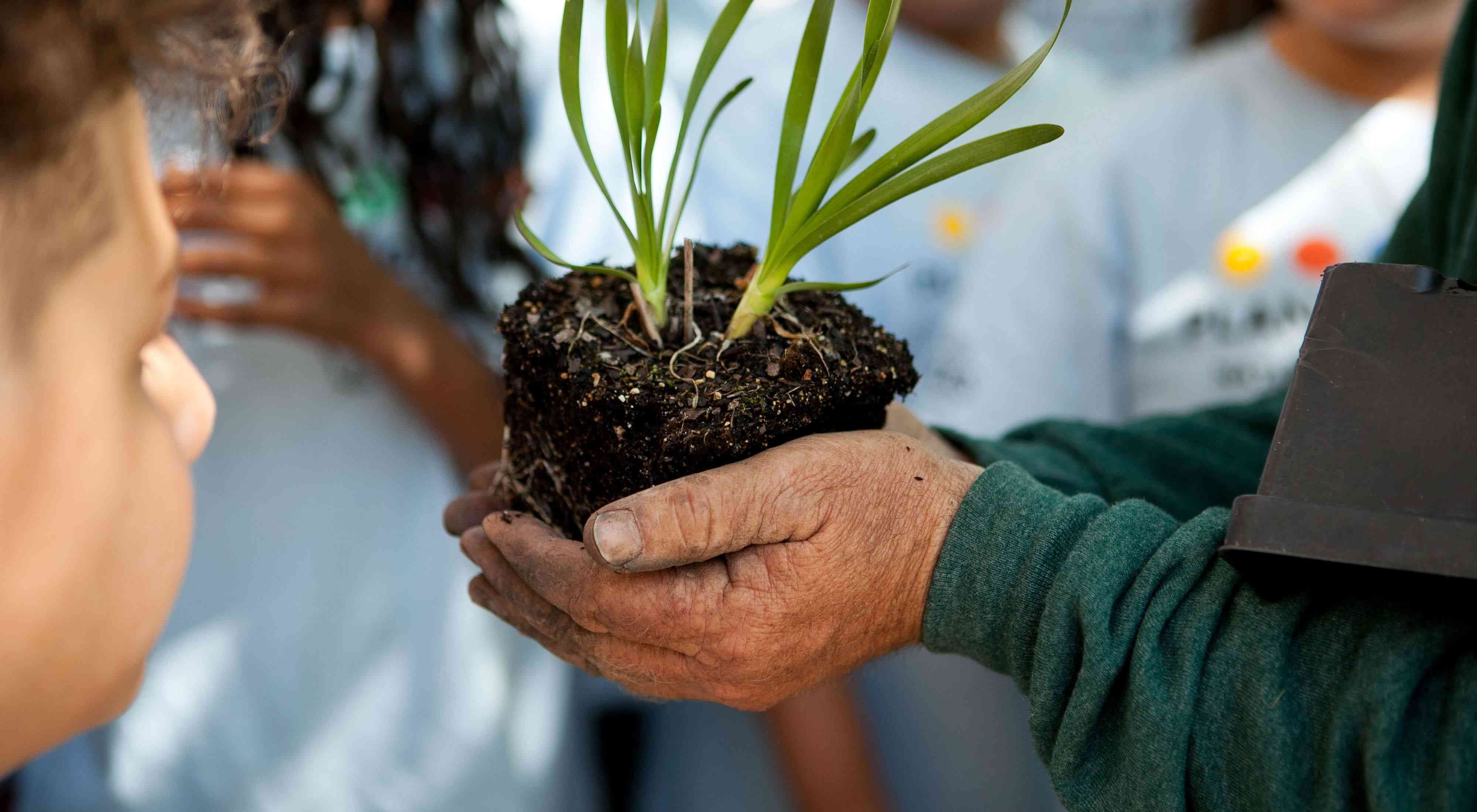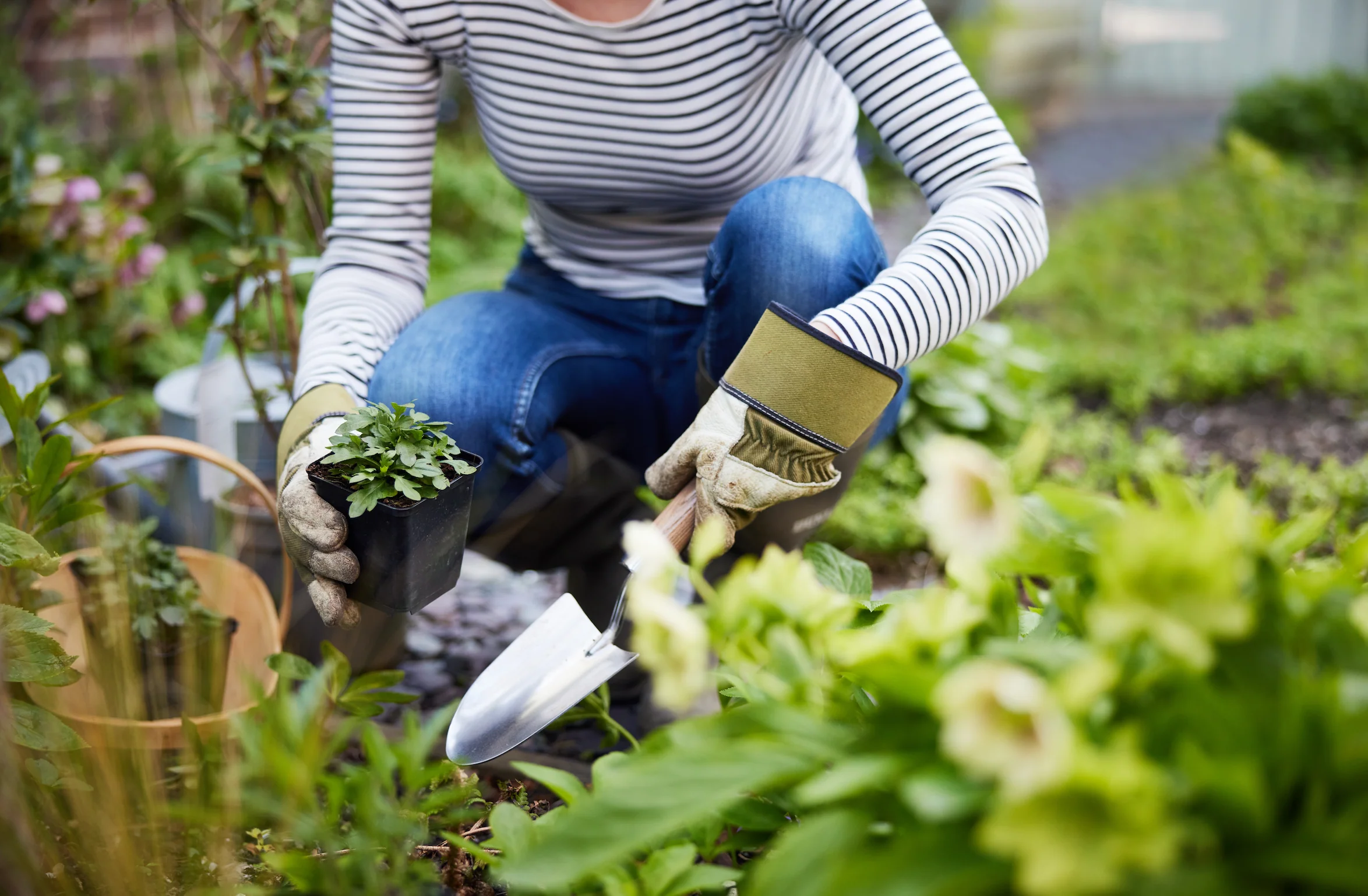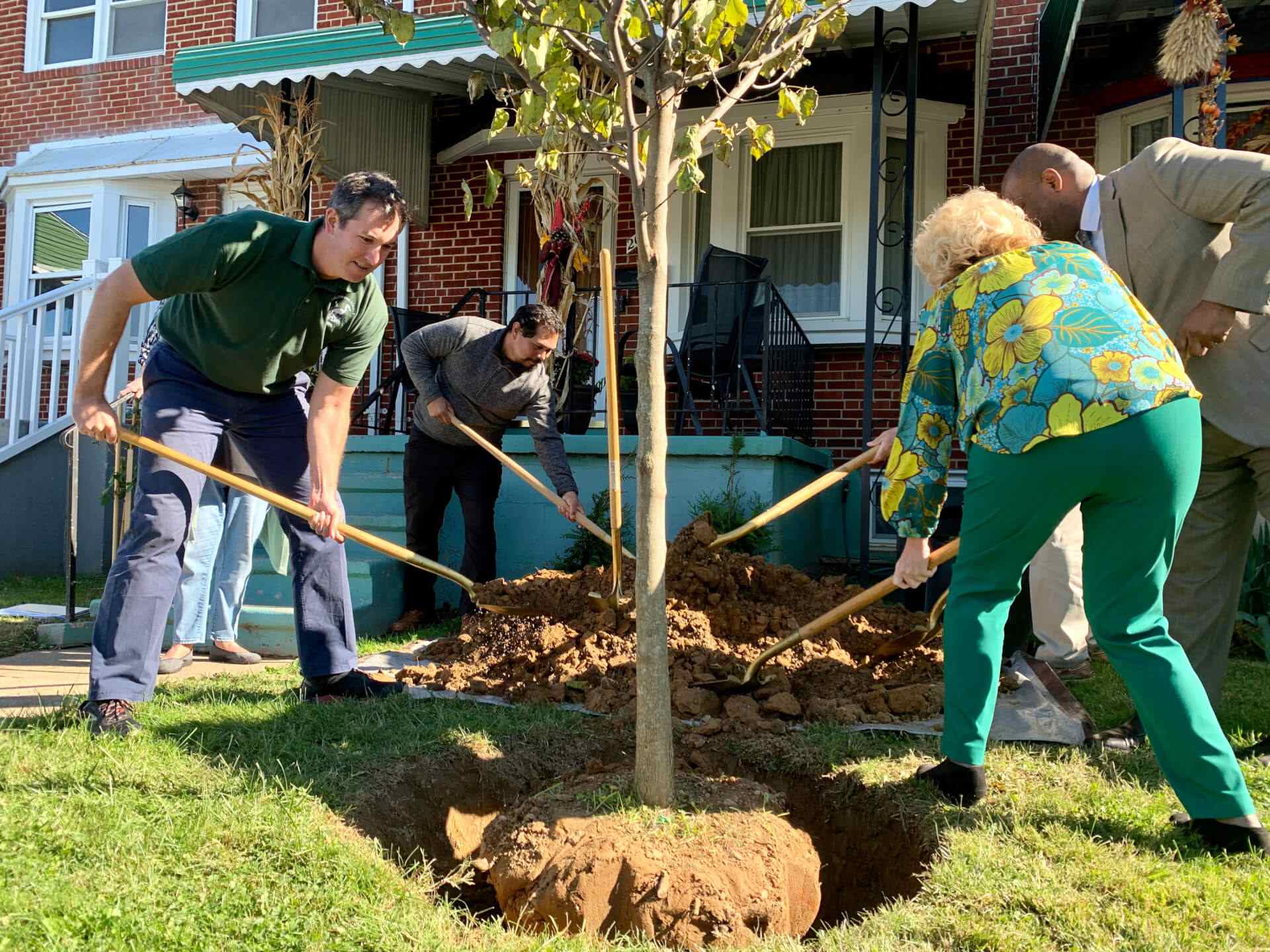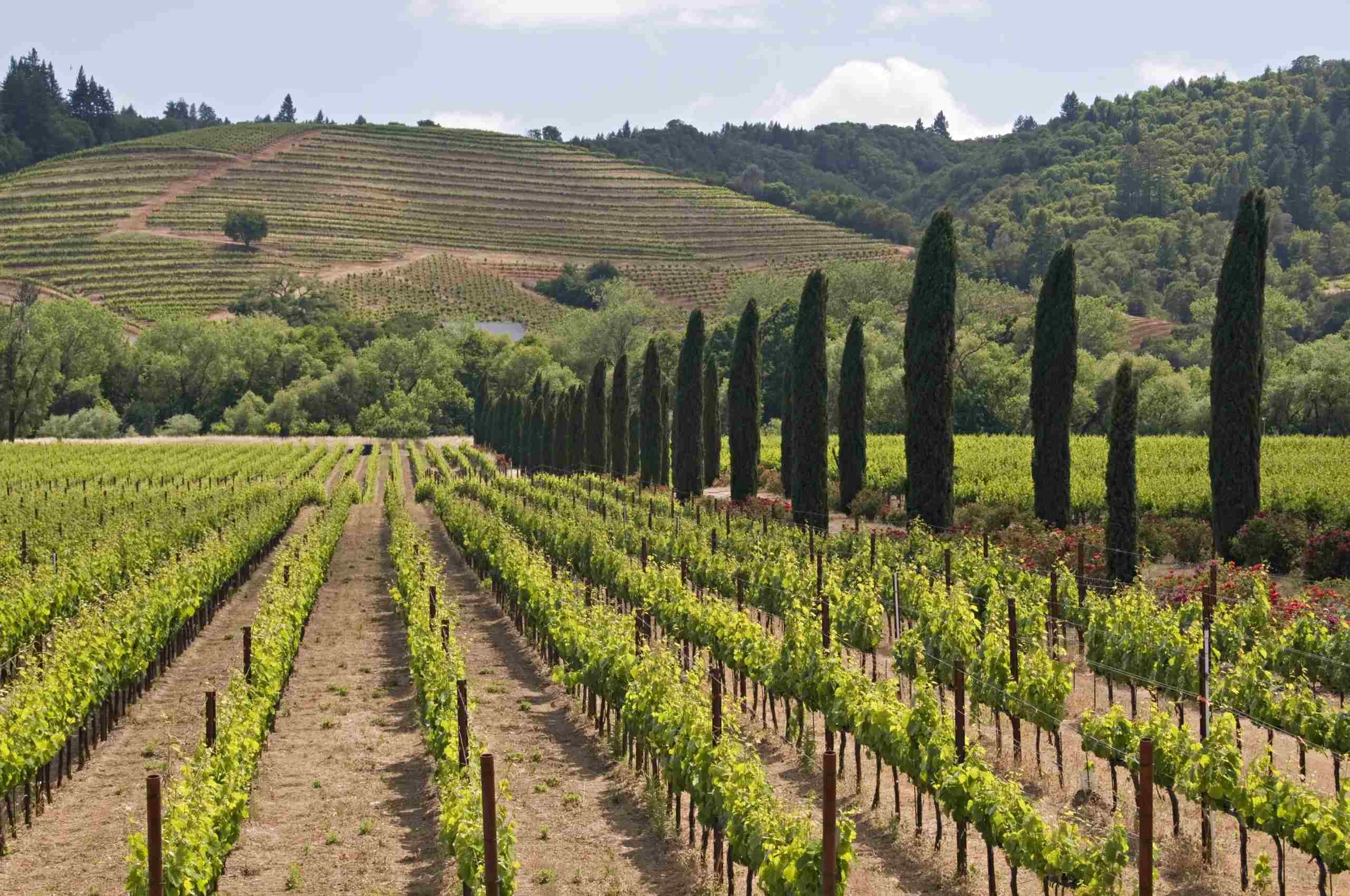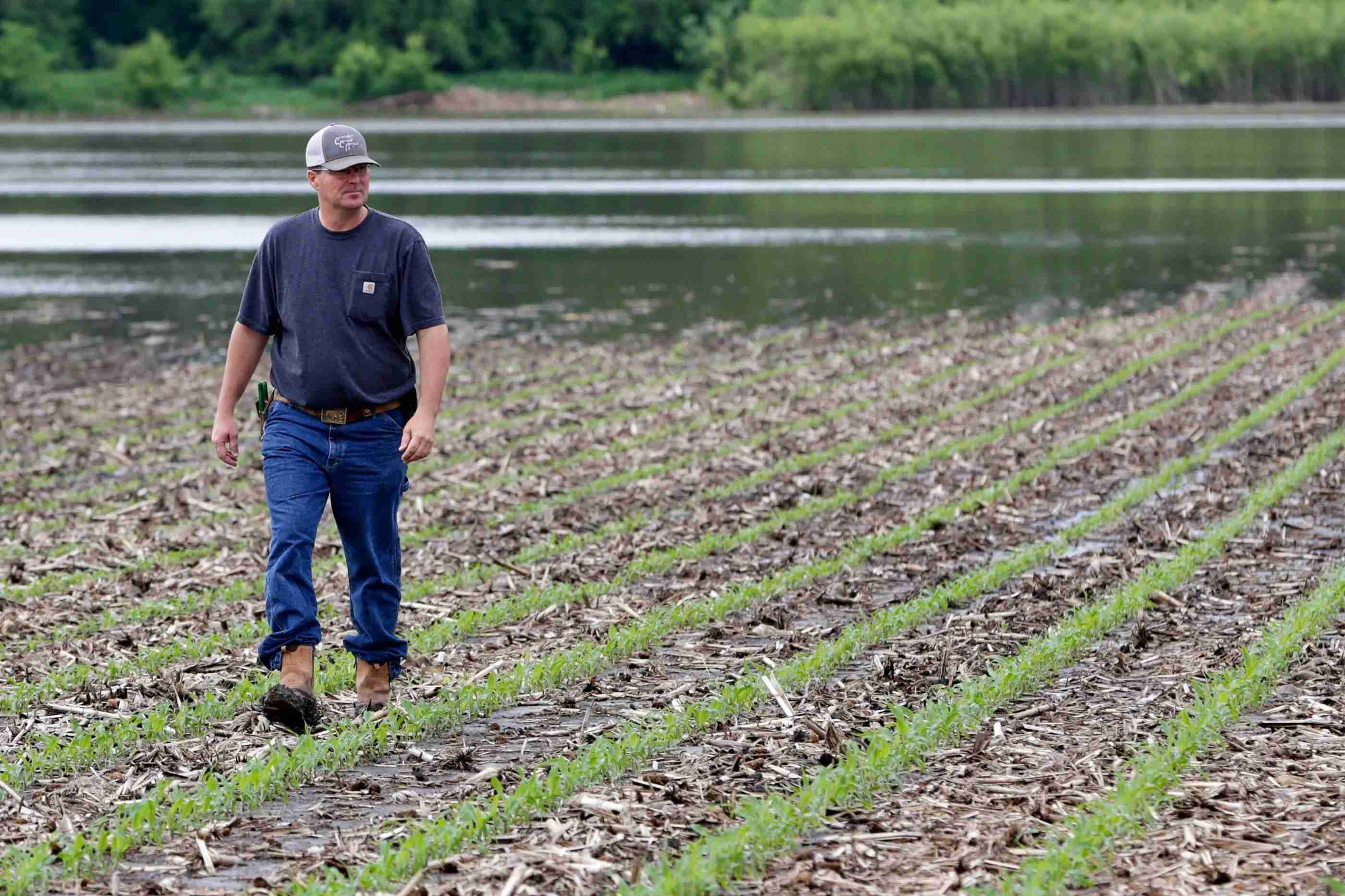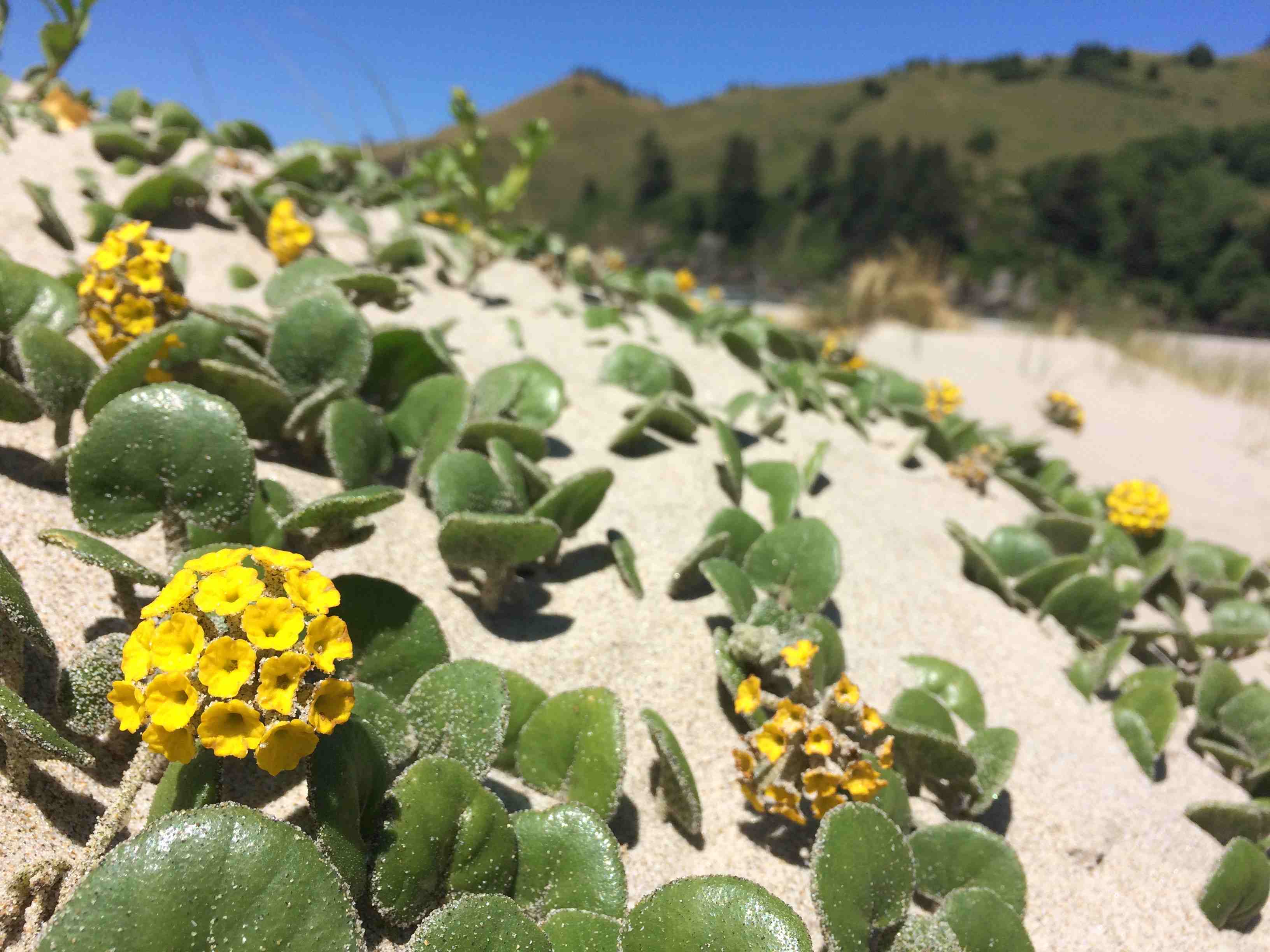Home>Gardening Basics>Understanding Soil>Where Is Planting Zone 6


Understanding Soil
Where Is Planting Zone 6
Modified: February 6, 2024
Learn about understanding soil in Planting Zone 6 and discover how it impacts your gardening success. Find out the key factors that influence soil composition and quality.
(Many of the links in this article redirect to a specific reviewed product. Your purchase of these products through affiliate links helps to generate commission for Chicagolandgardening.com, at no extra cost. Learn more)
Table of Contents
Introduction
When it comes to gardening, understanding your planting zone is essential. It determines which plants are most likely to thrive in your area and guides your gardening decisions. Planting Zone 6, also known as USDA (United States Department of Agriculture) Hardiness Zone 6, is one of the many zones used worldwide to classify climate conditions.
But what exactly are planting zones? And why is it important to know your specific zone? In this article, we will explore the concept of planting zones, delve into the characteristics of Zone 6, and provide useful tips for gardening in this zone.
Planting zones, also called hardiness zones, are geographical areas that are categorized based on their climatic conditions. These zones help gardeners understand the suitability of different plant species for their specific region. The USDA Hardiness Zone Map is one widely used system that divides the United States into 13 zones, with each zone representing a specific range of temperatures.
Understanding your planting zone is crucial because it allows you to choose plants that are best suited to your climate. By selecting plants that can withstand the temperature extremes of your zone, you increase their chances of survival and growth, while minimizing the risk of disappointment and wasted time and resources.
Planting Zone 6 encompasses a diverse range of temperate climates. It can be found in various regions across the United States, including parts of the Midwest, Northeast, and Pacific Northwest. This zone experiences moderate to cold winters, with average annual minimum temperatures falling between -10°F and 0°F (-23°C to -18°C).
The climate conditions in Zone 6 create a unique environment for gardening. The growing season typically lasts from late spring to early fall, with occasional frost occurring in early spring and late fall. This means that gardeners in Zone 6 need to select plants that are able to withstand both colder temperatures and the potential for early or late frosts.
In Zone 6, gardeners have a wide variety of plant options to choose from. Many popular garden staples, such as roses, lilacs, and hostas, thrive in this zone. Additionally, vegetable crops like tomatoes, peppers, and lettuce can be successfully grown during the warmer months. However, it’s important to select plant varieties that are adapted to the specific climate conditions of Zone 6 to ensure optimal growth and productivity.
Gardening in Zone 6 does require some planning and attention to detail. Understanding the specific needs and requirements of the plants you choose to grow is essential. Providing adequate water, sunlight, and soil conditions will help your plants thrive and produce a bountiful harvest.
In the following sections, we will explore suitable plants for Zone 6 and provide valuable tips to help you make the most of your gardening experience in this zone. So, let’s dig in and discover the wonders of gardening in Planting Zone 6!
What Are Planting Zones?
Planting zones, also known as hardiness zones, are geographic areas that are defined based on their climate conditions. These zones serve as a useful tool for gardeners and horticulturists to determine which plants are most likely to thrive in a particular region. The concept of planting zones was introduced by the United States Department of Agriculture (USDA) to assist gardeners in selecting plants that can withstand the temperature extremes of their area.
Planting zones are determined by factors such as the average annual minimum temperature and the length of the growing season. The USDA Hardiness Zone Map is one of the most widely used systems for classifying planting zones in the United States. This map divides the country into 13 zones, with each zone spanning a range of temperatures.
The zones start from Zone 1, the coldest zone with the lowest temperatures, to Zone 13, the warmest zone with the highest temperatures. Each zone is further divided into subzones, indicated by the letters “a” and “b”, to account for even smaller temperature variations within a zone.
Knowing your planting zone is vital for successful gardening. It helps you select plants that are adapted to the specific climate conditions of your region, increasing the chances of their survival and productivity. Different plants have different temperature tolerances, and planting within the appropriate zone ensures that your plants are not exposed to extreme conditions that could harm or inhibit their growth.
Planting zone information can typically be found on plant labels, seed packets, or in gardening books and resources. It is essential to pay attention to this information when choosing plants. Remember that planting zones are not the only factor to consider; factors such as soil type, sunlight exposure, and moisture levels also play a significant role in plant success.
It’s important to note that while planting zones provide valuable guidance, they are not the only factor in determining plant suitability. Microclimates, such as those created by buildings, bodies of water, or elevation changes, can significantly impact local temperature and weather patterns. These microclimates may vary from the general planting zone, making it necessary to consider specific site conditions when choosing plants.
By understanding planting zones, you can make informed decisions about the plants you choose for your garden. Whether you’re interested in growing vegetables, flowers, shrubs, or trees, knowing your planting zone allows you to select varieties that are better adapted to your climate, resulting in healthier and more fruitful plants.
Now that we’ve gained a better understanding of planting zones, let’s explore Planting Zone 6 in more detail and discover the unique climate conditions and gardening opportunities it offers.
Understanding Plant Hardiness
Plant hardiness refers to a plant’s ability to tolerate and survive specific temperature extremes. It is an important factor to consider when selecting plants for your garden, as it determines whether a plant will thrive in your climate or struggle to survive. Understanding plant hardiness is crucial for successful gardening, as it helps you choose plants that are adapted to your specific environmental conditions.
The USDA plant hardiness zone system, also known as the USDA Hardiness Zone Map, is widely used in the United States and many other countries to classify plants based on their ability to withstand cold temperatures. The map divides the country into different zones based on the average annual minimum temperature. Each zone represents a specific temperature range, typically spanning a 10-degree Fahrenheit difference.
For example, Zone 6 encompasses areas where the average annual minimum temperature ranges from -10°F to 0°F (-23°C to -18°C). This means that plants labeled as suitable for Zone 6 should be able to survive and thrive within this temperature range. However, it’s important to note that hardiness is not just about cold tolerance; it also encompasses a plant’s ability to withstand heat and other environmental factors.
Plant hardiness is influenced by various factors, including genetics, environmental conditions, and the plant’s natural adaptation to its native habitat. Plants native to cold regions, such as conifers and alpine flowers, are typically more winter-hardy and better suited for colder zones. On the other hand, plants native to tropical or warmer climates will struggle in colder regions and may require special protection or winter care.
In addition to hardiness zones, horticulturists and plant breeders also assign hardiness ratings to specific plant cultivars. These ratings provide more detailed information about a plant’s ability to withstand cold or heat stress. For example, a plant with a hardiness rating of H3 is considered to be hardy in most parts of the UK, while a plant with a rating of H1 may require protection in cold regions.
Understanding plant hardiness is essential for successful gardening. By selecting plants that are adapted to your specific hardiness zone, you ensure that they have a higher chance of survival and are more likely to thrive in your garden. It’s also important to consider other environmental factors such as sunlight, soil type, and moisture levels, as they can also affect a plant’s ability to grow and flourish.
Now that we have a better understanding of plant hardiness, let’s explore the characteristics and climate conditions of Zone 6, one of the many planting zones, and discover the suitable plants and gardening tips for this zone.
Identifying Planting Zone 6
Identifying your specific planting zone is the first step towards successful gardening. In the United States, the USDA Hardiness Zone Map is the most commonly used system for classifying planting zones. Zone 6, also known as USDA Hardiness Zone 6, encompasses a wide range of regions across the country, each with its own unique climate conditions.
To identify if you are in Zone 6, you can refer to the USDA Hardiness Zone Map. The map divides the United States into thirteen different zones, labeled with numbers from 1 to 13. Zone 1 represents the coldest areas with the lowest minimum temperatures, while Zone 13 represents the warmest areas with the highest minimum temperatures.
Zone 6 can be found in various parts of the nation, including portions of the Midwest, Northeast, and Pacific Northwest. Some states that fall partially or entirely within Zone 6 include Pennsylvania, Ohio, Indiana, Illinois, Missouri, Kansas, Colorado, Utah, Oregon, and Washington. However, it’s important to remember that planting zones can vary within a state, depending on factors such as elevation, proximity to bodies of water, or local weather patterns.
One of the easiest ways to determine your zone is to visit the USDA’s official website and use their interactive map. By entering your zip code or selecting your location on the map, you can quickly identify your specific planting zone and access detailed information about the average annual minimum temperature for your area.
Additionally, many local garden centers, nurseries, and cooperative extension offices provide planting zone information specific to their region. It can be helpful to consult these local resources, as they may offer valuable insights into microclimates or unique considerations for gardening in your area.
Once you have identified that you are in Zone 6, you can proceed to select plants that are known to be suitable for this zone. Knowing your specific zone allows you to make informed decisions and choose plants that are more likely to thrive and survive the local climate conditions.
In the next sections, we will explore the climate conditions of Zone 6 in more detail and recommend suitable plants that can flourish in this zone. With this knowledge, you will be well-equipped to create a beautiful and thriving garden in your Zone 6 area.
Climate Conditions in Zone 6
Climate conditions in Zone 6 can vary, as this zone spans across different regions in the United States. However, there are certain characteristics and patterns that can help us understand the general climate conditions in this zone.
Zone 6 experiences a temperate climate, with moderate to cold winters and mild to hot summers. The average annual minimum temperature in Zone 6 ranges from -10°F to 0°F (-23°C to -18°C). This means that gardeners in Zone 6 need to be prepared for freezing temperatures and occasional frost events during the winter months.
The growing season in Zone 6 typically starts in late spring, after the danger of frost has passed, and extends through early fall. This provides gardeners with a decent amount of time to cultivate a variety of plants and enjoy the beauty of their gardens.
Spring and fall in Zone 6 can bring variable weather, with temperature fluctuations and occasional frost events. It’s important for gardeners to be aware of the potential for late frosts in the spring and early frosts in the fall that could damage sensitive plants. Taking precautions such as covering plants or bringing them indoors during these periods can help protect them from frost damage.
Summer in Zone 6 can be quite warm, with temperatures ranging from the 70s°F (20s°C) to the 90s°F (30s°C). The hot and humid weather of summer provides favorable conditions for many garden plants to thrive and produce abundant harvests.
Precipitation patterns in Zone 6 vary depending on the region. Some areas may receive consistent rainfall throughout the year, while others may experience a drier summer season. Gardeners in Zone 6 should consider the specific rainfall patterns in their area and adjust watering practices accordingly to ensure plants receive adequate moisture.
In terms of soil, Zone 6 encompasses a range of soil types, including loam, sandy soil, and clay. It’s important to understand the characteristics of your specific soil type and make any necessary amendments to improve drainage, fertility, or pH levels to support healthy plant growth.
The diverse climate conditions of Zone 6 offer opportunities for a wide variety of plants to thrive. From vibrant flowers to bountiful vegetable gardens, there is no shortage of options for gardeners in this zone. By selecting plants that are well-suited to the specific climate conditions of Zone 6, gardeners can create beautiful, thriving gardens that bring joy and beauty throughout the seasons.
In the next section, we will explore some suitable plants for Zone 6, providing you with inspiration to create a stunning garden in your area.
Suitable Plants for Zone 6
Planting Zone 6 offers a wide range of plant options to adorn your garden with beauty and color throughout the seasons. With its moderate to cold winters and mild to hot summers, this zone is ideal for various types of plants, including flowering perennials, shrubs, trees, and even vegetables. Here are some suitable plants that can thrive in Zone 6:
1. Perennials:
– Hostas: These shade-loving plants are known for their lush foliage and are available in a wide variety of colors and sizes.
– Coneflowers (Echinacea): These stunning flowers are not only beautiful but also attract butterflies and pollinators to your garden.
– Black-eyed Susans (Rudbeckia): These yellow daisy-like flowers add a touch of brightness to any garden with their vibrant color.
– Daylilies (Hemerocallis): These popular perennials offer stunning blooms in various colors and are known for their low maintenance requirements.
– Russian Sage (Perovskia atriplicifolia): This drought-tolerant perennial features silvery-gray foliage and tall, airy purple flowers.
2. Shrubs:
– Hydrangeas: These flowering shrubs are favored for their beautiful blooms in shades of pink, blue, or white, depending on the soil pH.
– Lilacs (Syringa): Offering fragrant blooms in a range of colors, lilacs are beloved for their beauty and symbolism of spring.
– Winterberry (Ilex verticillata): This deciduous shrub produces bright red berries during the winter, adding a touch of color to the garden.
– Forsythia: These early bloomers dazzle with bright yellow flowers, signaling the arrival of spring.
3. Trees:
– Maple Trees: From the classic Sugar Maple (Acer saccharum) to the Japanese Maple (Acer palmatum), there are various maple tree varieties that can thrive in Zone 6.
– Dogwood Trees: Known for their stunning spring blooms, dogwood trees add beauty to any landscape with their showy flowers.
– Redbud Trees (Cercis canadensis): These small trees display clusters of vibrant pink or purple flowers in early spring before the leaves emerge.
– Crabapple Trees (Malus): With their gorgeous spring blooms and colorful fruits, crabapple trees are a popular choice for Zone 6 gardens.
4. Vegetables:
– Tomatoes: Choose from a variety of tomato cultivars, such as ‘Big Boy,’ ‘Roma,’ or ‘Cherry Tomatoes,’ to grow juicy and flavorful tomatoes during the warm summer months.
– Peppers: Whether you prefer sweet bell peppers or spicy chili peppers, Zone 6 offers a suitable climate for growing a wide range of pepper varieties.
– Leafy Greens: Lettuce, spinach, and kale thrive in cooler temperatures, making them ideal choices for early spring and fall plantings.
This is just a small selection of the many plants that can thrive in Zone 6. When selecting plants for your garden, consider factors such as sunlight exposure, soil conditions, and water requirements. By choosing plants that are well-suited to Zone 6’s climate conditions, you’ll ensure a successful and vibrant garden.
In the next section, we will provide some helpful gardening tips specifically tailored to gardening in Zone 6 to help you make the most of your gardening experience.
Gardening Tips for Zone 6
Gardening in Zone 6 offers a wide range of possibilities, with its moderate to cold winters and mild to hot summers. To make the most of your gardening experience in this zone, here are some valuable tips to keep in mind:
1. Know Your Frost Dates:
Zone 6 can experience late spring and early fall frost events. Stay informed about the typical frost dates for your area and plan your gardening activities accordingly. Start tender plants indoors or under protective coverings to avoid frost damage.
2. Select Suitable Plant Varieties:
Choose plant varieties that are specifically adapted to Zone 6’s climate conditions. Look for labels or references to cold hardiness or recommended USDA zones. This will help ensure that your plants have the best chance of thriving in your specific region.
3. Provide Adequate Watering:
Zone 6 can have variable rainfall patterns, so it’s important to monitor soil moisture levels and provide adequate watering when necessary. Water deeply and less frequently to encourage deep root growth and drought tolerance.
4. Mulch and Protect:
Apply a layer of organic mulch around your plants to help retain soil moisture, regulate soil temperature, and suppress weed growth. In winter, consider using protective coverings, such as burlap or frost cloth, to shield sensitive plants from harsh cold temperatures.
5. Consider Microclimates:
Pay attention to microclimate variations within your garden or landscape. Certain areas may be more exposed to wind or have different sun exposure. Take advantage of microclimates to grow a wider variety of plants that may have slightly different requirements.
6. Plan for Succession Planting:
Make use of the long growing season in Zone 6 by practicing succession planting. As one crop finishes, start planting another to maximize your harvest and keep the garden productive throughout the growing season.
7. Soil Improvement:
Zone 6 encompasses different soil types, so it’s important to understand your specific soil conditions. Conduct a soil test to determine nutrient deficiencies and pH levels. Amend the soil with organic matter, such as compost, to enhance its fertility, structure, and drainage.
8. Protect Against Pests and Diseases:
Be vigilant for common pests and diseases in Zone 6, such as aphids, slugs, and fungal infections. Implement preventive measures, such as proper spacing, good air circulation, and regular inspection, to minimize the risk of infestations and diseases.
By following these gardening tips, you can make the most of Zone 6’s climate conditions and create a thriving and beautiful garden. Don’t forget to experiment, learn from your gardening experiences, and enjoy the process of nurturing and watching your garden flourish.
Now that you’re equipped with valuable tips, you’re ready to embark on your gardening journey in Zone 6. In the concluding section, we will summarize the key points and remind you of the wonders that await you in your garden.
Conclusion
Gardening in Zone 6 allows for a diverse range of plants to thrive, thanks to its moderate to cold winters and mild to hot summers. By understanding the concept of planting zones and identifying yourself in Zone 6, you can select plants that are well-suited to your specific climate conditions, increasing the chances of gardening success.
Throughout this article, we explored the concept of planting zones and the importance of knowing your specific zone. We delved into the climate conditions of Zone 6, which encompasses various regions across the United States, and highlighted suitable plants that can flourish in this zone.
Zone 6 offers a wide selection of perennials, shrubs, trees, and vegetables that can add beauty, color, and flavor to your garden. By selecting plant varieties that are well-adapted to the specific climate conditions of Zone 6, you can create a thriving and visually appealing garden.
Remember to consider factors such as frost dates, water requirements, soil conditions, and microclimates when planning and maintaining your garden in Zone 6. Employing proper garden care techniques, such as mulching, succession planting, and pest control, will help maximize your gardening success.
Gardening in Zone 6 is a rewarding experience that allows you to witness the wonders of nature firsthand. From the vibrant blooms of perennials to the bountiful harvests of vegetables, your garden will bring joy, beauty, and a sense of accomplishment.
So, whether you’re a seasoned gardener or a beginner, embrace the opportunities that Zone 6 offers. Enjoy the process of nurturing your plants, experimenting with different varieties, and witnessing the growth and transformation of your garden throughout the seasons.
With the knowledge and tips shared in this article, you are now well-equipped to embark on your gardening journey in Zone 6. So, roll up your sleeves, grab your gardening tools, and let your garden in Zone 6 flourish and thrive!
